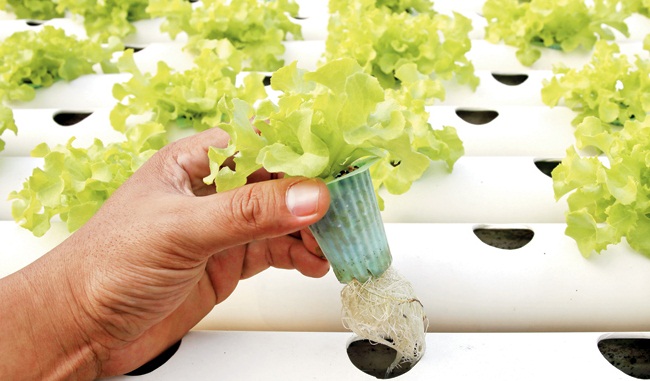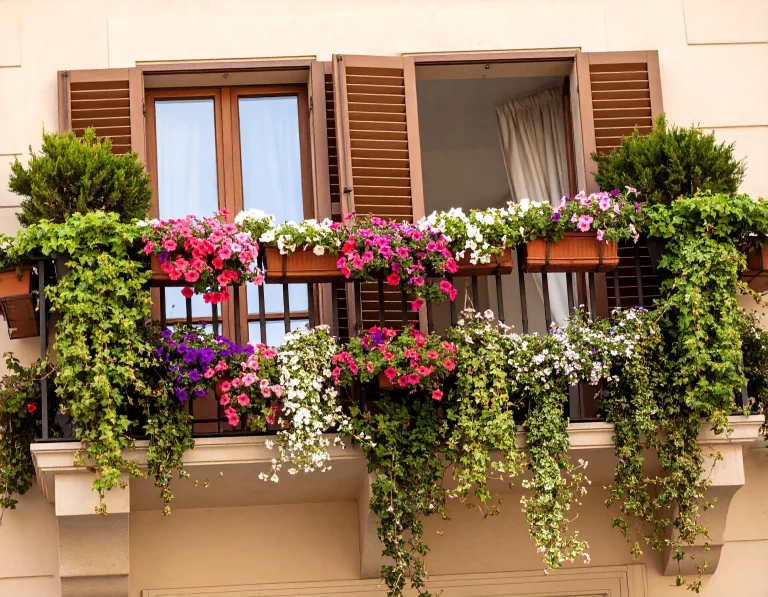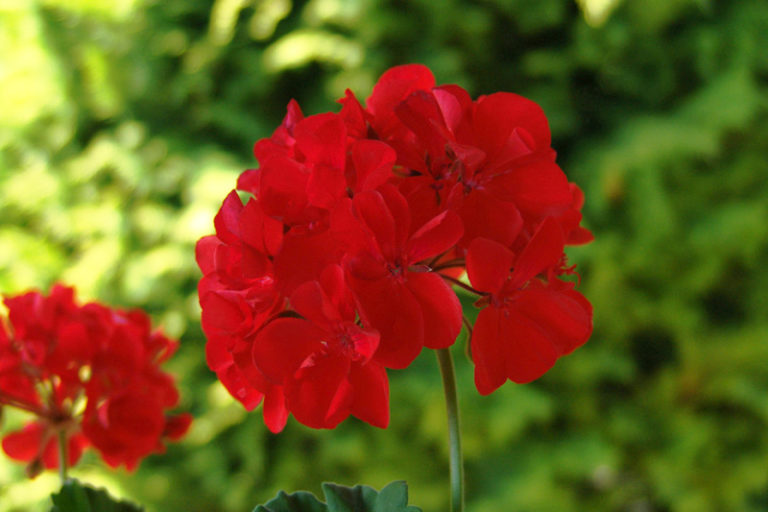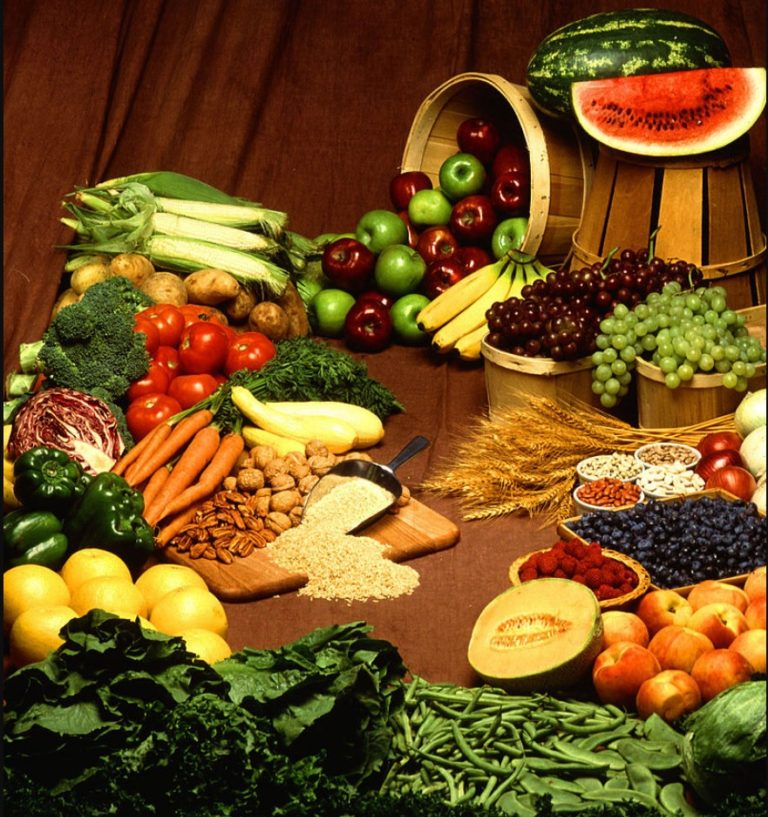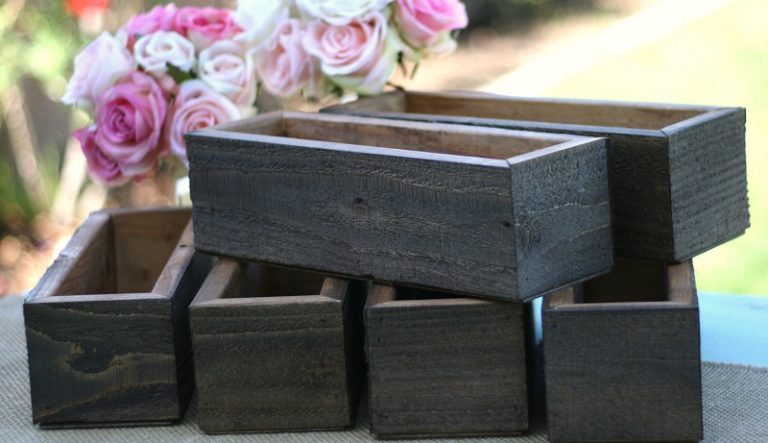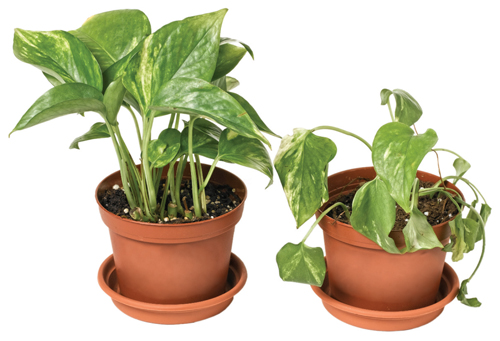What is hydroponics?
Hydroponics is the cultivation of plants without soil, in which it receives all the necessary nutrients in the right quantities through a solution.
Переваги гідропоніки:
After mastering the basic concepts in hydroponics, you will grow almost everything – it is much easier than in the soil. If you use automated solution circulation systems (some of them are very easy to collect at home), the need for watering and fertilizing plants will disappear altogether.

Pots for hydroponics
You can buy a whole hydroponics system with special pots, or you can make a hydroponics system yourself.
The simplest dishes for hydroponics are made very quickly: from an ordinary plastic pot and any larger container (this container must hold a sufficient amount of water, be chemically safe and not let light through). The best example of such a container is a paper (1 liter) bag of juice or milk – a tetrapak laid on its side with a precisely cut (from the side of the seam) hole for the pot. The pot with the substrate should be immersed in the solution by 1-2 centimeters.
Hydroponics Substrate
Substrate: vermiculite, perlite, expanded clay, mineral wool, coconut fiber, foam rubber or oasis, small stones. This substrate will cost no more than ordinary soil. But the earth, unlike the substrate, for hydroponics, must be changed annually when transplanting.
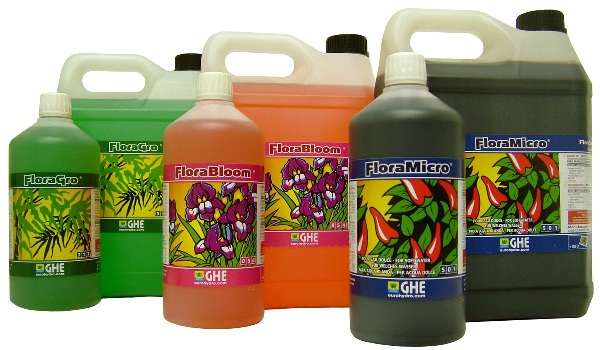
Special concentrated solution for hydroponics
One liter of solution is enough for one small one (pelargonium, spathiphyllum) per year. A jar of concentrate intended for 100 liters of solution is enough for 100 years or for the annual cultivation of 100 plants.
Read the instructions carefully and strictly follow the manufacturer’s recommended solution concentration.
The volume of water in the hydroponics vessel should always be the same, add settled water from time to time; 1 time in three months, it is necessary to completely change the water, unless other measures are provided by the manufacturer of the solution.
For annual vegetable crops, a concentration higher than average is recommended – about 1.25 times. In winter, during the dormant period, the concentration should be reduced by about 2-3 times from usual, and the water level, depending on the dormant period, should be reduced to a minimum.
The hydroponics system is a container with liquid in which a plastic mesh cup with a plant is placed. To make the plant stable, gravel or expanded clay is poured into a glass.
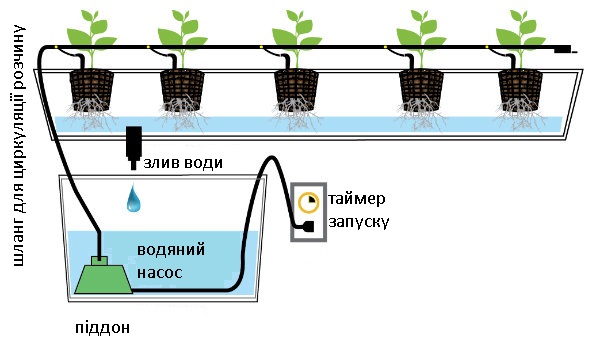
The principle of operation of hydroponics
From the tank, water, with the help of a submersible pump (aquarium pump), flows into the upper hydroponics structure and returns back to the container, while washing the roots of plants.
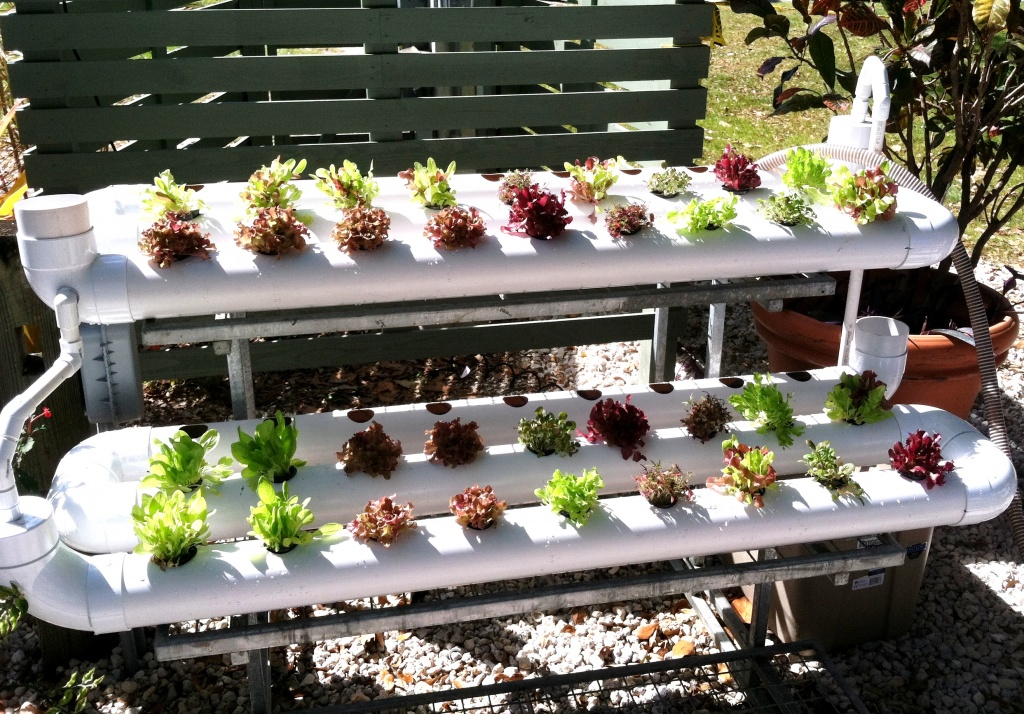
Which plants are suitable for growing in hydroponics
Almost all plants that can be grown from seeds are suitable for growing using hydroponics: various salads, and herbs, cherry tomatoes, bell peppers, cucumbers, herbs, strawberries, strawberries, annual and perennial flowers and indoor plants. Salads and herbs grow very quickly and do not take up much space. It is not recommended to transfer adult plants with a delicate root system to hydroponics.
How to transplant plants in hydroponics
Remove the plant from the pot, soak the roots with soil for several hours in water at room temperature. After that, gently wash the ground, try to untangle the roots and gently wash the remaining soil with a shower. After cleaning the roots from soil residues, straighten them down and, holding the plant, plant them in a special pot, cover the roots with a substrate (it is not necessary that the plant be completely immersed in water, the solution will rise up through the capillaries of the substrate, reaching the roots; over time, they themselves will germinate to the desired depth). After that, pour plain water on top of the substrate, pour the desired water level into the vessel and leave the plant for about 7 days. Only then can the water be replaced with a solution.
Lavender comes in pink, purple, white, and even yellow.
Important: Do not pour the solution immediately after transplanting!
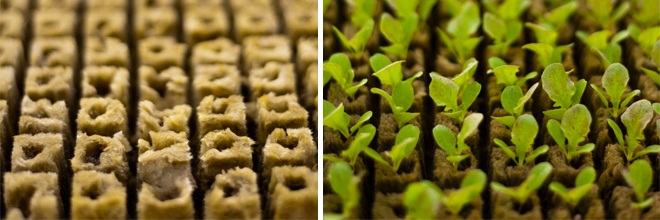
How to grow seedlings in hydroponics
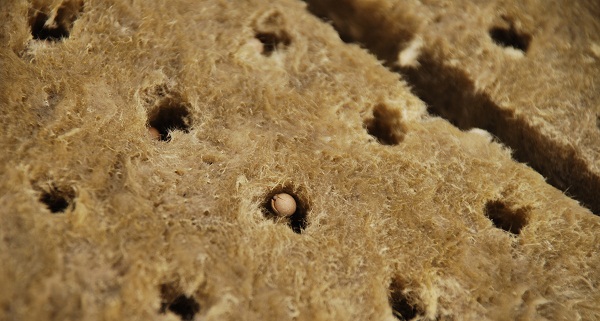
To grow seedlings in hydroponics, you need to have mineral wool or foam rubber with small shallow depressions. We put a seed in each recess, put it on a tray of water and wait for germination. In phase 2 of true leaves, we transplant our seedlings into pots with soil for hydroponics and put them in a system.

